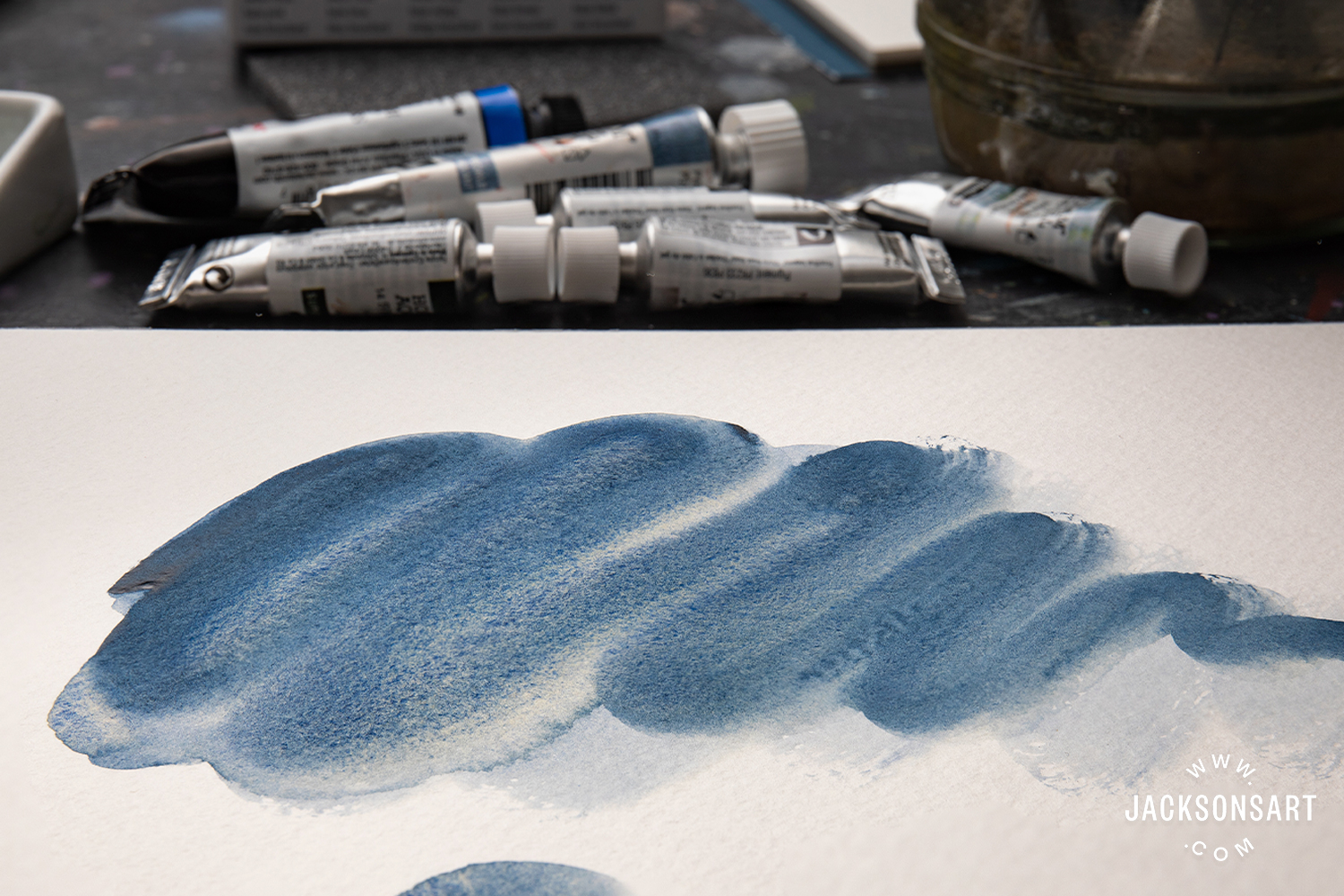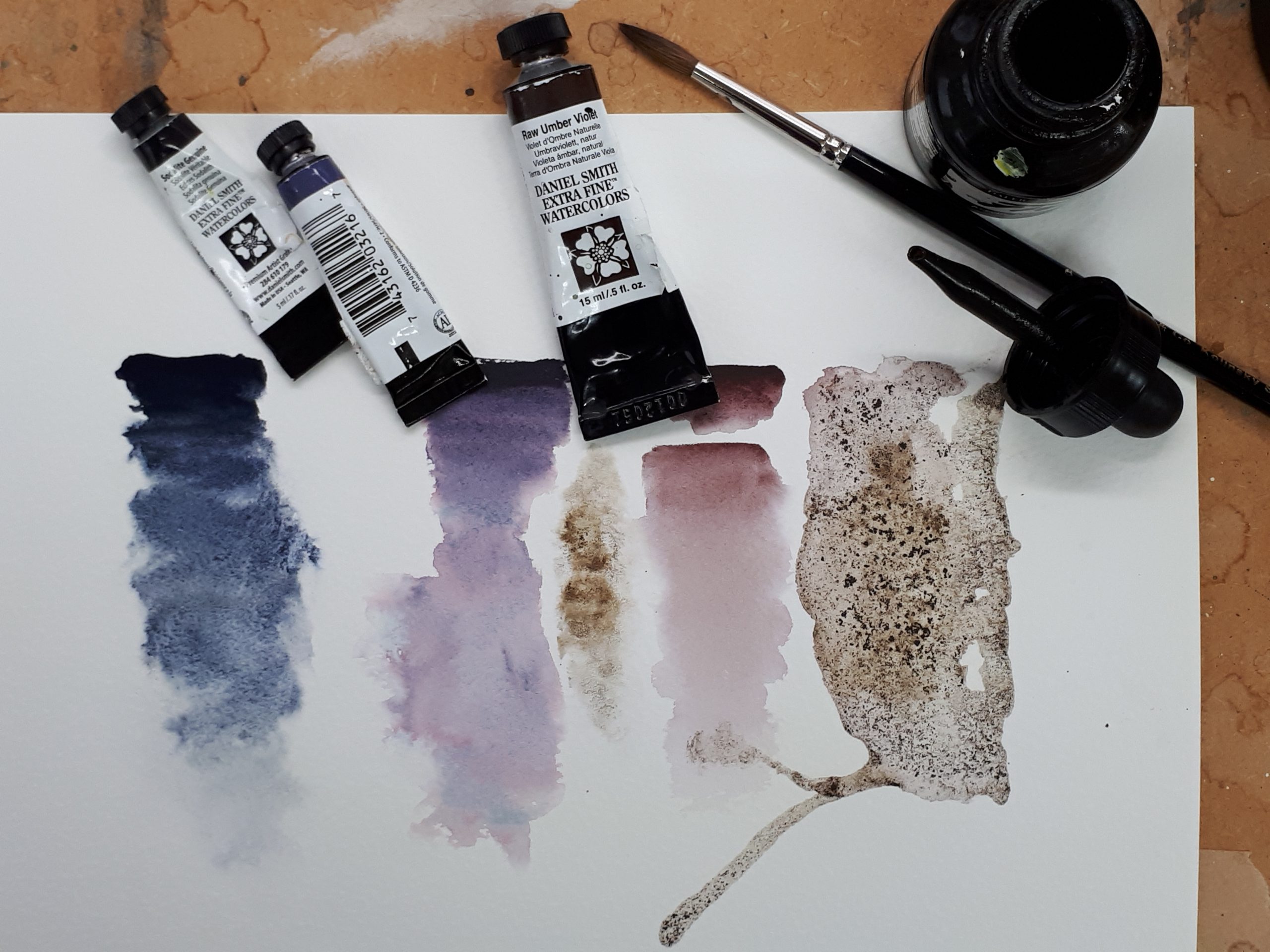Watercolor granulation is a technique that creates a unique texture and visual effect in watercolor paintings.
Granulation occurs when pigments separate and settle into the valleys of the paper, creating a mottled or speckled appearance.
This technique can add depth and interest to a painting, and is often used to create natural or organic textures, such as tree bark or stone.

To achieve granulation…
Artists typically use highly granulating pigments, such as ultramarine blue or burnt sienna, and apply them in a wet-on-wet technique. The amount of water used in the mixture can also affect the level of granulation, with more water resulting in a softer effect and less water producing a more defined texture.
While granulation can be unpredictable and difficult to control, many artists embrace the unique qualities it adds to their work.
Understanding Watercolor Granulation
Definition of Granulation

When you apply watercolor paint to paper, the pigments can either spread out evenly or clump together, creating a textured effect known as granulation.
This effect is caused by the pigments separating and settling into the rough surface of the paper, creating a speckled or mottled appearance.
Granulation can be desirable for adding depth and interest to your watercolor paintings. It’s particularly effective for creating natural textures, such as the rough surface of rocks or the grainy texture of sand.
Science Behind Granulation

The science behind granulation has to do with the properties of the pigments themselves. Some pigments are heavier and denser than others, which causes them to settle into the paper’s surface irregularly.
For example:
Ultramarine Blue is a pigment that tends to granulate, while Phthalo Blue does not. This is because Ultramarine Blue is made up of larger, heavier particles that settle into the paper’s surface, while Phthalo Blue is made up of smaller, lighter particles that remain suspended in the water.
Paints from certain brands also tend to granulate more than others…
For example, both Daniel Smith and M. Graham watercolors have exceptional, strong granulating pigments compared to Da Vinci’s far less granulating range (this factor is a matter of personal preference – some people would rather that grainy, granulating impression in their paints to a lessened extent).
Learn more about which watercolor brands do and do not have granulation here.
Other factors that can affect granulation include the type of paper you use, the amount of water you apply, and the angle at which you hold your brush.
Overall:
Understanding watercolor granulation can help you create more dynamic and interesting paintings. By experimenting with different pigments and techniques, you can achieve a variety of textures and effects that will make your paintings stand out.
Techniques and Applications
Creating Granulation Effects
To create granulation effects in watercolor painting, you need to use a granulating pigment such as those from Daniel Smith and M. Graham.
These pigments contain larger particles that settle into the paper’s texture, creating a grainy, textured effect. When water is added to granulating pigments, the pigment particles separate, allowing the water to flow around them and settle into the paper’s texture.
To create a granulation effect, you can use a dry brush technique. Load your brush with pigment and then use a dry brush to apply it to the paper. This will create a grainy, textured effect that is perfect for creating the illusion of texture in your artwork.
Controlling Granulation
Controlling granulation in watercolor painting can be challenging, but there are a few techniques you can use to achieve the desired effect.
One technique is to use a wet-on-wet technique. This involves wetting the paper with water before applying the pigment. This will create a smooth, even texture that is perfect for creating a more polished look.
Another technique is to use a wet-on-dry technique. This involves applying the pigment to dry paper, which will create a more textured effect. You can also use different brushes to achieve different effects. A flat brush will create a smooth, even texture, while a round brush will create a more textured effect.
Uses in Artwork
Granulation effects can be used in a variety of ways in watercolor painting. They are perfect for creating the illusion of texture in your artwork, whether you are painting landscapes, still lifes, or portraits.
Granulation effects can also be used to create a sense of depth in your artwork, as the textured effect can make objects appear closer or further away.
Simply put:
Granulation effects are a powerful tool in the watercolor painter’s arsenal. By using granulating pigments and different techniques, you can create a wide range of effects that will add depth, texture, and interest to your artwork.
More
Find out the best brushes you should use for watercolor painting in this post below!



Leave a Reply